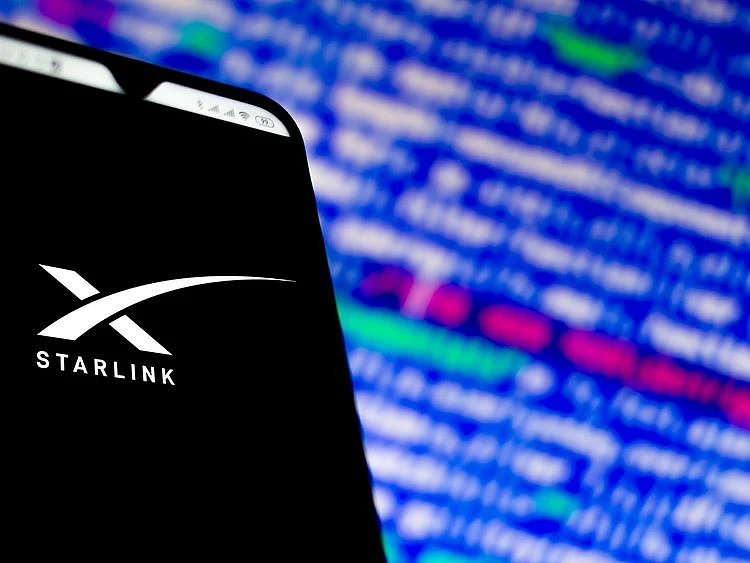How Elon Musk's Starlink sparked a new kind of space race
Billionaires Musk and Bezos are on a mission that could narrow the digital divide

New York: Close to 3 billion people have never used the internet, and billionaires Elon Musk and Jeff Bezos are on a mission that could narrow the digital divide. With their Starlink and Project Kuiper networks, the two entrepreneurs are competing to launch thousands of small satellites that will zip around the globe in what's known as low-Earth orbit (LEO), connecting places that are too remote for ground-based broadband or have been cut off by natural disasters or conflict.
China and European nations are backing rival LEO systems for fear of being shut out of a critical future technology. But colonising this special slice of Earth's atmosphere comes with heavy startup costs as well as complex and potentially dangerous challenges.
1. How low is LEO?
Most LEO satellites circle from 500 kilometers (311 miles) to 2,000 kilometers above Earth's surface, so they can send data to the ground more rapidly than traditional communication satellites that are stationed at roughly 36,000 kilometers out. Those high-orbit systems have a median signal delay, or latency, of nearly 600 milliseconds for a round trip - too slow for technologies such as live video streaming, self-driving cars and high-frequency securities trading. Starlink aims for latency as low as 20 milliseconds, which Musk hopes eventually to cut in half. At those speeds, LEO satellites may compete with the fastest ground networks.
2. Why does Starlink need so many satellites?
Satellites that are closer to Earth see a smaller part of its surface, so you need more of them. Also, the speed needed for an object to keep a stable orbit - achieved by balancing its velocity with Earth's gravity - increases in LEO, so a satellite must travel at about 27,000 kph to stay aloft, circling the planet in 90 to 120 minutes. As each satellite is only briefly in contact with a ground transmitter, another needs to appear on the horizon before the first goes out of view. To ensure there's always a satellite overhead, you need lots of them strung out along crisscrossing paths that envelop the globe.
3. How will Starlink and its rivals make money?
By selling their services to consumers, governments, businesses working in remote regions and providers of terrestrial 5G wireless and fixed-line broadband services that need to fill gaps in their own networks. Starlink has also drawn interest from military customers, with parent company Space Exploration Technologies Corp. securing a Pentagon contract in June to provide connectivity in Ukraine and another in September with the US Space Force. Starlink's use in Ukraine stoked controversy after it emerged that Musk had refused a request from the country's government to extend Starlink coverage to Russian-held Crimea to assist in a naval drone attack on Russian targets in 2022. Musk wrote on his social media platform X on September 27 that "Starlink needs to be a civilian network, not a participant to combat."
4. Can anyone get Starlink?
It's available in a growing number of countries, at varying prices. A Starlink package cost $120 per month in New York City, $90 in Alaska and 75 ($92) in the UK as of September 2023, excluding hardware costs and delivery fees.
5. What's prompted the dash into LEO?
Technological advances, tumbling launch costs and growing demand for connectivity in remote places. Past LEO projects such as Iridium, Globalstar and Orbcomm went bankrupt. Today's are more viable as the cost of satellite launches has plunged with the introduction of lighter, reusable rockets. Musk's Falcon 9 can send up a satellite at a cost of $2,600 per kilogram, down from roughly $10,000 two decades ago. SpaceX estimated that Starlink may cost up to $30 billion to install, and Musk has said that annual revenue could eventually reach $50 billion, helping to bankroll his ultimate ambition - colonizing Mars.
5. Are Starlink's competitors catching up?
In April 2022, Bezos's Amazon.com Inc. struck the biggest launch deal ever, to send up more than 3,000 satellites for his network. China is building a LEO constellation, and Europe's top satellite and aerospace companies have teamed up to bid for a 6 billion ($6.4 billion) satellite project known as IRIS spearheaded by the European Union. French President Emmanuel Macron has said creating a European satellite offering that could rival Musk is a "matter of sovereignty." By the end of the decade, there could be more than 100,000 satellites zipping around the Earth, more than 20 times the number in operation in early 2022. Astronomers have already noticed the growing traffic, complaining that Starlink satellites are interfering with their view of space.
6. What's the downside of LEO?
Because the satellites are moving so fast, collisions are harder to predict and can be devastating. A 10-centimeter chunk of debris traveling in LEO can contain about as much energy as 7 kilograms of TNT, enough to shatter a satellite into thousands of pieces. Radar detection systems can estimate a satellite's trajectory only to within a few miles as solar radiation and atmospheric drag make orbital paths slightly irregular. LEO is already used by satellites for climate observation, Earth imaging and military purposes, as well as the International Space Station. It's also littered with dead satellites and stray bits of old spacecraft. There's a worry that a few collisions could cascade into further smashes, creating clouds of debris that put LEO's most useful orbits off-limits for centuries. There are various proposals for removing space junk. But they would cost billions of dollars, and governments can't decide who would pay the bill.
Sign up for the Daily Briefing
Get the latest news and updates straight to your inbox
Network Links
GN StoreDownload our app
© Al Nisr Publishing LLC 2025. All rights reserved.